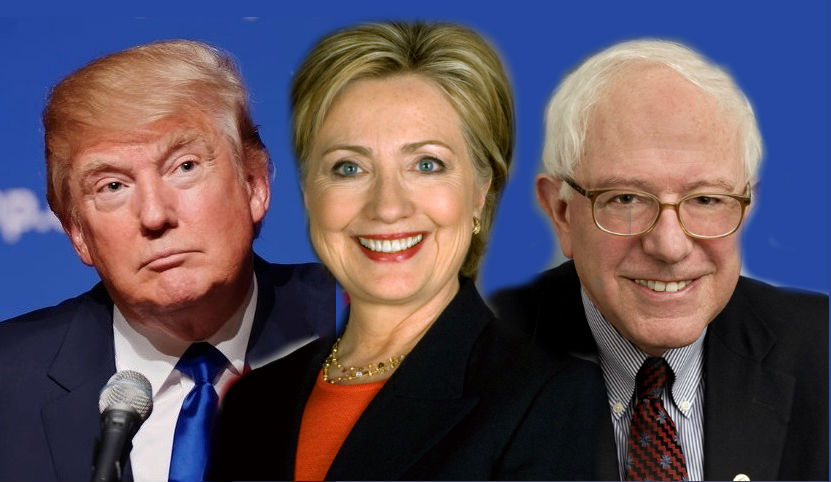by PharmacyChecker.com | Mar 4, 2016 | Drug Importation, Drug Prices, Government

Yesterday, our CEO, Tod Cooperman, MD, applauded leading presidential candidates for supporting legal reforms to make it easier for Americans to buy lower cost medications from other countries.
“With millions of Americans doing this safely for more than a dozen years, it’s time for our government to stop threatening and scaring consumers and simply do what’s right: Make personal drug importation fully legal. Every presidential candidate should support this,” says Dr. Cooperman.
To read the full press release, go here: http://www.pharmacychecker.com/news/trump-clinton-sanders-support-drug-importation.asp.
Tagged with: Bernie Sanders, Donald Trump, Drug Importation, Hilary Clinton, Tod Cooperman
by Gabriel Levitt, President, PharmacyChecker.com and Prescription Justice | Feb 19, 2016 | Drug Importation, Drug Prices, Policy
With its gift of $7.2 million to fund various research projects, the John and Laura Arnold Foundation gave a boost this week to the cause of lowering drug prices in America. According to the Foundation’s press release: “The research projects will focus on analyzing how regulatory policies and programs impact drug pricing, drug development, and patients’ access to medication.”
The lion’s share of the funds will go to the Memorial Sloane Kettering Cancer Center’s Evidence Driven Drug Pricing Project. Led by Dr. Peter Bach, the effort pursues strategies to evaluate the relative effectiveness of medications. The goal of Dr. Bach’s project is to make sure that medications are priced according to how well they actually work. Sounds like common sense, but too often medications that often don’t work are widely prescribed, and very expensive!
The money will also go toward various evidence-based studies looking into the workings of the drug development pipeline, state and federal regulations that affect Medicaid drug purchasing, and alternative Medicaid purchasing models that tie reimbursement to patient health outcomes.
One smaller project caught my eye, because it looks at pharmaceutical regulations and law that affect innovation. The Brigham and Woman’s Hospital’s Program on Regulations, Therapeutics, and Law will receive $748,445 to analyze existing regulations enacted to incentivize pharmaceutical innovation. The press release reads: “Researchers will analyze programs and incentives such as tax breaks, market exclusivity protections, and the Food and Drug Administration’s (FDA) fast-track approval pathways.”
In looking at regulations and law, the cause of lower drug prices would be well served by a research project dedicated to evaluating the effects of federal restrictions on prescription drug importation. Ostensibly, drug importation restrictions are in place to prevent unsafe and counterfeit medications from reaching patients, but we know that they also curtail access to lower cost, safe and effective medication as well. That’s why millions of Americans buy foreign medication online despite the prohibiting regulations.
New research would help determine a more suitable regulatory framework to protect patient health, but also expand access to more affordable medication through safe personal drug importation. This recent grant by the John and Laura Arnold Foundation is its second in the area of prescription drug prices. Three’s a charm!
Tagged with: Brigham and Woman’s Hospital, Drug Importation, Evidence Driven Drug Pricing Project, John and Laura Arnold Foundation, Memorial Sloane Kettering Cancer Center
by Gabriel Levitt, President, PharmacyChecker.com and Prescription Justice | Dec 31, 2015 | Drug Importation, Drug Prices, Online Pharmacies, Skipping medications

As we move out of 2015 and into 2016 with a strong wave of hostility rising throughout the country about high drug prices, what I’m about to report may seem incongruous. Fewer Americans seem to be buying lower cost medications from other countries. For the past few years, largely based on data from the CDC in 2013, I’ve published the number five million as the approximate number of Americans who, due to high drug prices, import medication annually for personal use. But a newer CDC report published in 2015 (that I recently came across) puts that number closer to four million, a 20% decrease.
If drug prices are going up, and Americans are fed up with prescription costs, wouldn’t you expect more people to be buying lower cost medications from outside the country? With fewer Americans buying medication internationally, potentially one million, how many of them are simply not taking prescribed medication? Are our most trusted authorities scaring Americans away from obtaining lower cost medications from other countries, or has affordable access improved over the past few years?
(more…)
Tagged with: Alliance for Safe Online Pharmacies, CDC, Center for Safe Internet Pharmacies, Drug Importation, Drug Prices, FDA, National Association of Boards of Pharmacy, Online Pharmacies, Partnership for Safe Medicines, Patent Cliff, Seroquel, United States




